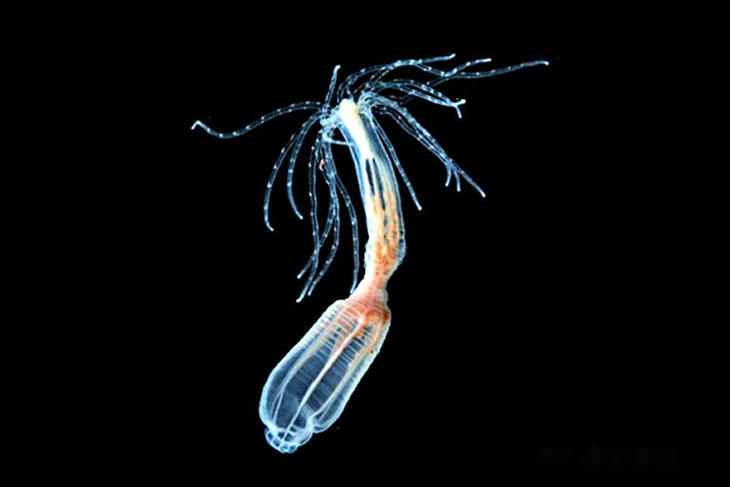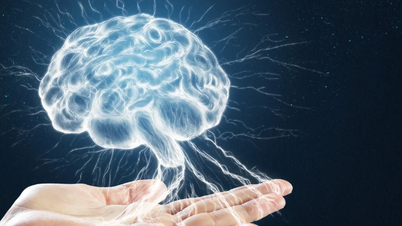Although scientists have long known that starfish anemones show virtually no signs of aging, identifying the stem cells responsible for that ability has been a challenge, largely due to their extremely small size - Photo: Whitney Lab for Marine Bioscience
In nature, there are creatures that possess the ability to surprise scientists: they almost do not age and can regenerate their bodies throughout their lives. One of them is the starfish anemone (Nematostella vectensis), a representative of the Cnidaria group, "relatives" of hydra and jellyfish.
A recent discovery from the University of Vienna has revealed the mechanism that helps sea anemones maintain "eternal youth", and at the same time raises the big question: can humans learn that secret to get closer to immortality?
Starfish anemone: creatures that defy the laws of aging
Humans also have a certain capacity for regeneration: wounds heal, broken bones mend themselves, and even the liver can regenerate after severe damage. However, this ability has its limits, and aging is inevitable.
In contrast, starfish anemones show almost no signs of aging. They can regenerate their entire bodies, reproduce both sexually and asexually, and survive for long periods without any decline in biological function.
This makes sea anemones ideal “model organisms” for studying the secrets of anti-aging. Some other species in the Cnidaria group, such as the jellyfish Turritopsis dohrnii, have even been dubbed “immortal” because they can reverse their life cycle.
Stem cells: the key to "immortality"
In a study published in the journal Science Advances, Professor Ulrich Technau's team (University of Vienna) discovered a population of cells capable of differentiating into many different cell types in the body of starfish anemones. These are potential pluripotent stem cells, the type of cells that help them maintain their ability to regenerate throughout their lives.
"We have identified a group of cells that can become neurons or glandular cells. This is a prime candidate for the role of stem cells, and could explain why sea anemones hardly age," said lead author Dr. Andreas Denner.
To achieve this result, the research team used single-cell genome sequencing technology combined with gene transfer, thereby monitoring cell development based on transcriptome (mRNA) profiles.
Scientists focused on two key genes: nanos and piwi. These are genes that have been conserved over hundreds of millions of years of evolution and play a role in regulating the formation of stem cells and germ cells.
Using CRISPR to knock out the nanos2 gene, they discovered that the protein is not only needed for sperm and egg formation, but also involved in the development of somatic cells, the cells that make up the body. This suggests that the mechanism of immortality in sea anemones appeared 600 million years ago, long before humans appeared.
What can humans learn from starfish anemones?
In humans, stem cells exist, but their regenerative capacity is limited to a few organs. This explains why humans can heal wounds but still cannot prevent overall aging. In contrast, sea anemones possess a widespread network of multipotent stem cells, allowing for almost limitless regeneration of the body.
If one day science can decipher the exact mechanism that helps sea anemones maintain their "immortal" state, humans will have the opportunity to apply it to many fields of medicine. First of all, regenerative medicine, where scientists can develop advanced therapies to restore severely damaged organs that medicine is currently almost powerless against.
In addition, this mechanism also opens up the prospect of prolonging healthy life by slowing down the aging process at the cellular level, helping people maintain health and flexibility longer.
More importantly, exploiting this special ability could also create a breakthrough in the treatment of chronic and degenerative diseases, from Alzheimer's, Parkinson's to degenerative musculoskeletal syndromes, which are "diseases of old age" that current medicine cannot completely solve.
While these findings are promising, humans are still a long way from the concept of “immortality.” Human biology is much more complex than that of a starfish anemone, and directly applying its regeneration mechanisms to humans is a huge challenge. Moreover, extending lifespan is not just a biological issue, but also involves ethical, social, and even philosophical questions about life and death.
Yet every scientific advance in the regenerative mechanisms of Cnidaria brings us closer to understanding how nature works, and how humans can use that knowledge to improve our health and quality of life.
MINH HAI
Source: https://tuoitre.vn/kham-pha-co-che-tre-vinh-vien-cua-hai-quy-sao-bien-mo-ra-hy-vong-cho-loai-nguoi-20250915224410016.htm







![[Photo] Prime Minister Pham Minh Chinh chairs the second meeting of the Steering Committee on private economic development.](https://vphoto.vietnam.vn/thumb/1200x675/vietnam/resource/IMAGE/2025/11/01/1762006716873_dsc-9145-jpg.webp)





































































































Comment (0)